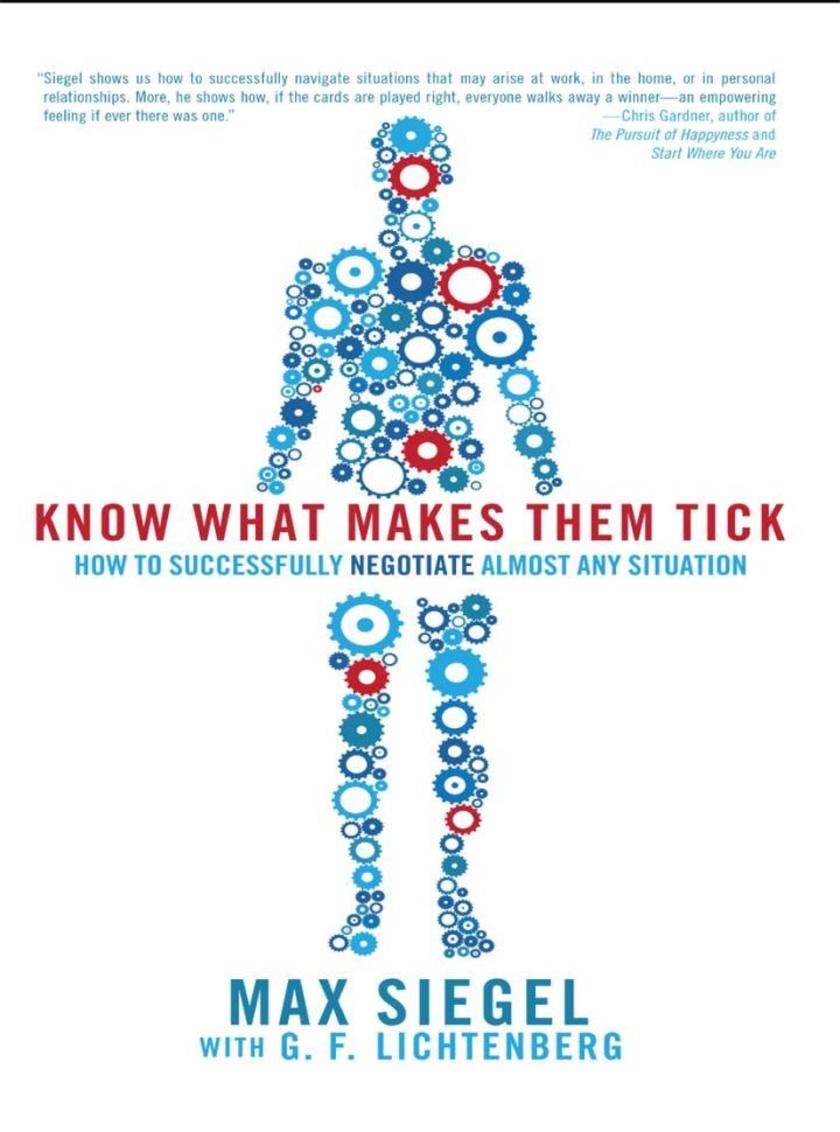
Passion and Illusion
¥55.31
New York Times bestselling author Barbara Delinsky captures the magic and truth of love in this delightful tale, first published in 1983, of opposites attracting.A controversial Boston radio talk-show host, Monica Grant is a strong, willful, and independent woman. She wants an equally strong man. Someone like the heroes in the romance novels she's addicted to . . . someone like Michael Shaw.A cop with the heart of a poet, Michael is looking for that special someone, too an old-fashioned, feminine woman. And for some reason he thinks Monica just might be the one. By turns infuriatingly chauvinistic and irresistibly attractive, Michael demands something from Monica that she doesn't know if she can give or even wants to. With Michael, can she find the happy ending of her own love story?

Variation on a Theme
¥55.31
New York Times bestselling author Barbara Delinsky enthralls millions of readers with emotionally powerful stories that vividly demonstrate the heart's, power to love. Here, first published in 1984, is an unforgettable story of a woman who must discover who she is before she can give herself to the man she loves.Although he'd already heard a great deal about Rachel Busek, nothing prepared Jim Guthrie for the beautiful flutist's gentle grace. A rough-hewn private investigator, Jim is nearly overwhelmed with the urge to love and protect her. And Rachel is both amazed and delighted at the ease with which Jim slips into her life. Yet as quick passion gives way to leisurely love, Rachel finds herself holding back. Troubling pieces of her past remain a mystery even to her, and keep her from trusting her heart. Now, she must either discover the truth about her past or risk losing the first man in her life worth keeping.

Fashion Victims
¥123.24
Pairing hilarious poetry with the stunning collage work for which he is famous, Michael Roberts takes on the fashion world letter by letter and in the way only a true insider can in Fashion Victims. This gorgeous, stylish book illustrated and written by the Vanity Fair fashion director, influential stylist, and artist is a witty send-up of the fashion world that will delight style lovers, popular culture aficionados, and art lovers alike with its wit, acute observations, truth, and poignancy. Impeccably designed by Roberts himself, Fashion Victims is a perfect tongue-in-chic gift and a timeless collectible.

Stepping Out Within
¥53.88
Stepping Out Within by Robert W. Olsen has de*ive copy which is not yet available from the Publisher.

The Fall of Rogue Gerrard
¥32.73
From New York Times bestselling author Stephanie Laurens comes her RITA-Award winning tale that shows how one night can change everything . . . forever.Robert "Rogue" Gerrard's reputation paints him as one of the ton's most notorious rakes. But once, long ago, he fell in love . . . and he's never forgotten the scintillating emotion he, then too young, turned his back on. But one stormy night, he discovers himself stranded at an inn with his childhood sweetheart, Lydia Makepeace, who has no business being there alone.Lydia, meanwhile, is horrified to find the one man in England guaranteed to protect her standing between her and the scandalous letter she must, simply must, retrieve.

Holy the Firm
¥72.01
In 1975 Annie Dillard took up residence on an island in Puget Sound in a wooded room furnished with "one enormous window, one cat, one spider and one person." For the next two years she asked herself questions about time, reality, sacrifice death, and the will of God. In Holy the Firm she writes about a moth consumed in a candle flame, about a seven-year-old girl burned in an airplane accident, about a baptism on a cold beach. But behind the moving curtain of what she calls "the hard things -- rock mountain and salt sea," she sees, sometimes far off and sometimes as close by as a veil or air, the power play of holy fire.This is a profound book about the natural world -- both its beauty and its cruelty -- the Pulitzer Prize-winning Dillard knows so well.

The Irrational Bundle
¥323.63
Dan Ariely's three New York Times bestselling books on his groundbreaking behavioral economics research, Predictably Irrational, The Upside of Irrationality, and The (Honest) Truth About Dishonesty, are now available for the first time in a single volume.

Voluntary Simplicity Second
¥83.03
When Voluntary Simplicity was first published in 1981, it quickly became recognized as a powerful and visionary work in the emerging dialogue over sustainable ways of living. Nearly three decades later, as the planet's environmental stresses become more urgent than ever, Duane Elgin has revised and updated his revolutionary book.Voluntary Simplicity is not about living in poverty; it is about living with balance. This book illuminates the pattern of changes that an increasing number of people around the world are making in their everyday lives adjustments in day-to-day living that are an active, positive response to the complex dilemmas of our time. By embracing a lifeway of voluntary simplicity characterized by ecological awareness, frugal consumption, and personal growth people can change their lives. And in the process, they have the power to change the world.

Flyaway
¥84.28
In this captivating memoir, Suzie Gilbert tells the rollicking story of how she turned her family life upside down to pursue her unusual passion for rehabilitating wild birds. Through adolescence and into adulthood, Suzie Gilbert struggled to find her calling. But when she took a job working at the animal hospital near her home in New York's Hudson Valley, her passion was born. She began bringing abused and unwanted parrots home and volunteering at a local raptor rehabilitation center, activities she continued for the next eleven years, even as she started a family. Then came the ultimate commitment to her cause: turning her home into Flyaway, Inc., a nonprofit wild bird rehabilitation center.Gilbert chronicles the years of her chaotic household-cum-bird-hospital with delightful wit, recounting the confusion that ensued as her husband and two young children struggled to live in a house where parrots shrieked Motown songs, nestling robins required food every twenty minutes, and recuperating herons took over the spare bathroom. Gradually, however, the birds came to represent the value of compassion and the importance of pursuing even the most unlikely of dreams.Often funny, sometimes painful, Gilbert's encounters with these beautiful creatures reveal profound truths not only about animals but also about our own lives lessons of birth and death, suffering and empathy, holding on and letting go. Original, lyrical, and highly entertaining, Flyaway will forever change the way you see this amazing member of the animal kingdom.

The Gardner Heist
¥88.56
Shortly after midnight on March 18, 1990, two men broke into the Isabella Stewart Gardner Museum in Boston and committed the largest art heist in history. They stole a dozen masterpieces, including one Vermeer, three Rembrandts, and five Degas. But after thousands of leads and a $5 million reward none of the paintings have been recovered. Worth as much as $500 million, the missing masterpieces have become one of the nation's most extraordinary unsolved mysteries.After the death of famed art detective Harold Smith, reporter Ulrich Boser decided to take up the case. Exploring Smith's unfinished leads, Boser travels deep into the art underworld and comes across a remarkable cast of characters, including a brilliant rock 'n' roll thief, a gangster who professes his innocence in rhyming verse, and the enigmatic late Boston heiress Isabella Stewart Gardner herself. Boser becomes increasingly obsessed with the case and eventually uncovers startling new evidence about the identities of the thieves. A tale of art and greed, of obsession and loss, The Gardner Heist is as compelling as the stolen masterpieces themselves.

Judgment Ridge
¥83.03
A riveting investigation of the brutal murders of two Dartmouth professors a book that, like In Cold Blood, reveals the chilling reality behind a murder that captivated the nation. On a cold night in January 2001, the idyllic community of Dartmouth College was shattered by the discovery that two of its most beloved professors had been hacked to death in their own home. Investigators searched helplessly for clues linking the victims, Half and Susanne Zantop, to their murderer or murderers. A few weeks later, across the river, in the town of Chelsea, Vermont, police cars were spotted in front of the house of high school senior Robert Tulloch. The police had come to question Tulloch and his best friend, Jim Parker. Soon , the town discovered the incomprehensible reality that Tulloch and Parker, two of Chelsea's brightest and most popular sons, were now fugitives, wanted for the murders of Half and Susanne Zantop. Authors Mitchell Zuckoff and Dick Lehr provide a vivid explication of a murder that captivated the nation, as well as dramatic revelations about the forces that turned two popular teenagers into killers. Judgement Ridge conveys a deep appreciation for the lives (and the devastating loss) of Half and Susanne Zantop, while also providing a clear portrait of the killers, their families, and their community and, perhaps, a warning to any parent about what evil may lurk in the hearts of boys.

Someone Will Be with You Shortly
¥84.16
Lisa Kogan is a forty-nine-year-old single woman who maintains that every human being deserves a great mattress, a comfortable pair of shoes, and a very smart shrink, and that no one has grown a decent tomato since 1963. She used to think the world wasn't all that complicated, but along came AIDS and crack and Rush Limbaugh, and she had to think again. Still, she's nostalgic for that time when you had to walk all the way across the room to change channels and there was no such thing as a spy satellite capable of spotting a precancerous mole on her left thigh.In Someone Will Be with You Shortly, Kogan grapples with issues big (her six-year-old daughter, Julia, and the 8,000 miles that separate them from Julia's father) and small (her recent apartment renovation, which consisted of turning over the sofa cushions and then realizing that they looked better the other way) with the self-deprecating humor and deep appreciation for what really matters that have made her column in O, The Oprah Magazine so beloved. Here is a book for anyone who has ever been unnerved by pleather pants, lunch meat, or ambivalent men (not necessarily in that order), but believes that life is a fragile bit of luck well worth living.

The Airplane
¥83.03
In this entertaining history of the jetliner, Jay Spenser traces aviation's challenges from the outset, and follows the flow of the simple yet powerful ideas that led us to defy gravity. Here are the pioneers innovators such as Otto Lilienthal, Igor Sikorsky, Louis Bl riot, Hugo Junkers, and Jack Northrop whose amazing contributions collectively solved the puzzle of flight. Along the way, Spenser demystifies the modern jetliner, examining the airplane from wings to flight controls to fuselages to landing gear, to show how each part came into being and evolved over time. And finally The Airplane addresses the future of aviation, outlining the breathtaking possibilities that await us tomorrow, many miles above the earth. Who were aviation's dreamers, and where did they get their inspirationHow did birds, insects, marine mammals, and fish help us to flyHow did the bicycle beget the airplane, and hot water heaters lead to metal fuselagesWho figured out how to fly without seeing the ground, enabling airline travel in all weather conditions?

American Son
¥83.92
From Oscar De La Hoya, one of the most celebrated fighters in the history of boxing, comes a frank and touching memoir about achieving the American Dream: his rise to the top, the power of a solid work ethic, his mother's painful death from cancer, the pitfalls of stardom, and a very personal take on what it means to be an American The son of Mexican-born parents, Oscar "The Golden Boy" De La Hoya has had an astonishing career. From boxing to business, from the recording industry to the charitable accomplishments of his foundation, his success is a testament to what one can achieve in the United States. But who is this man who has changed the lives of so manyWho has imprinted a positive mark upon the sport of boxing, for which many have all but given up hopeWho has become a symbol of success for an entire community, without many heroes to call their own?American Son answers these questions.Born into a boxing family, De La Hoya has defeated more than a dozen world champions and won six world titles as well as an Olympic gold medal a moment forever marked in the memory of anyone who has followed his career. Yet within the maelstrom of this success lay a man whose earnest belief in the goodness of everyone around him sometimes led him to stray far from his intended path. This book is The Golden Boy, and he bares his most heartbreaking mistakes as well as his most stunning triumphs for all of the world to see. This thrilling tale of an immigrant's son a quintessentially American story is the chronicle of an amazing journey that will provide readers with new insight into the private life of a figure who has to many reached iconic status.

Know What Makes Them Tick
¥84.16
Max Siegel started with none of the obvious advantages, yet again and again he built mutually beneficial partnerships with peers, mentors, supervisors, and industry leaders that took him to the heights of professional and personal achievement. He's managed some of the world's top recording artists, ballplayers, and race-car drivers, and helped run some of the top organizations in sports and entertainment. He's grown fragmented niche markets into bestselling audiences by tapping into the universal hopes and passions that bring people together. Now he travels the country giving motivational speeches and inspiring professionals of all kinds, sharing his method for connecting with people, whatever their differences.The secret, Siegel says, is to know what makes others tick. For some, it's financial security; for others, it's respect, devotion to family, a creative calling, or a vision of a better world. He shows how to encourage people to share these hidden, all-important motivations, and how to partner with them in the most powerful way there is: by finding the overlap between their goals and yours, so that together you can realize the dreams that make you tick.The nine universal rules outlined in Know What Makes Them Tick include:See Where You Want to Be, Not Where You AreFind Your AmbassadorsShow What's in It for ThemReaders will learn practical strategies for negotiating the challenges in every part of life, whether motivating colleagues to be more productive, finding a market for their product, uniting a divided family, or building a life of satisfaction in an unpredictable world. It's an eye-opening guide to a unique and powerful approach that anyone can use.

Buy, Close, Move In!
¥84.16
The rules have changed, but your dreams haven't. You can buy the home you want let award-winning real estate guru Ilyce Glink show you how! With her books, syndicated newspaper and Internet columns, radio show, blog, Web site, and numerous media appearances, Ilyce Glink has become the go-to expert Americans rely on to help them successfully navigate the tricky world of real estate a marketplace made even more complex today thanks to the Great Recession. Sure, there's a maze of new regulations. Sure, it's harder than ever to find a great deal or get the best loan. But you can do it. All it takes is a little expert advice from Ilyce. Clear and concise, Buy, Close, Move In! cuts through confusing red tape to provide the essential inside information you need to make the best decisions, and answers commonly asked questions about every step of the process, including: Credit from raising your score to identitifying theft protection Real estate investments trends and opportunities Foreclosures, short sales, and auctions Appraisals, closing costs, and other fees Mortgages fixed rate versus adjustable rate and other financing options With Ilyce Glink's Buy, Close, Move In! you're one step closer to home.

One More Theory About Happiness
¥85.05
Paul Guest was twelve years old, racing down a hill on a too big, ancient bicycle, when he discovered he had no brakes. Steering into anything that would slow down the bike, he hit a ditch, was thrown over the handlebars, and broke his neck.One More Theory About Happiness follows a boy into manhood, from the harrowing days immediately after his accident to his adult life as a teacher, award-winning poet, and soon-to-be husband. With wit, courage, and an unstoppable drive to live a life of his own creation stemming in part from his remarkable parents, who insisted he return to school only days after arriving home from the hospital Paul makes peace with his paralysis. As he grows older, he transforms it with his art, cultivating his lifelong gift for language into a searing poetic sensibility that has earned him praise from the highest ranks of American letters ( Wonderful John Ashbery; Astonishing Jorie Graham; Fierce and unnerving Robert Hass).An unforgettable story shatteringly funny, deeply moving, and breathtakingly honest One More Theory About Happiness takes us from a body irrevocably changed to a life fiercely cherished.

The Shadow Effect
¥88.56
Deepak Chopra, Debbie Ford, and Marianne New York Times bestselling authors and internationally acclaimed teachers have joined together to share their knowledge on one of the most crucial obstacles to happiness we face the shadow. These three luminaries, each with a signature approach, bring to light the parts of ourselves we deny but that still direct our life. For it is only when we embrace our shadow that we discover the gifts of our authentic nature.The shadow exists within all of us. It is a part of us and yet we spend most of our life running from it. But far from being scary, our dark side holds the promise of a better, more fulfilling life. Our shadow makes itself known every day. It is the reason we get furious over a friend showing up ten minutes late, yell at our parents or kids when they have done nothing wrong, and sabotage our own success at the worst possible time. Until we are able to embrace our dualistic nature, we will continue to hurt ourselves and those closest to us and fall short of our potential.Combining the wisdom of three experts, The Shadow Effect is a practical and profound guide to discovering the gifts of our shadow. These three authors powerfully pierce the veil of our unclaimed self, releasing us from the past and propelling us on a journey to wholeness. No longer living a half life, we are capable of achieving our dreams and reclaiming the happiness that is our birthright.

The Best Kind of Different
¥84.16
Until the summer of 2007, the word Asperger's, was not a part of Shonda Schilling's vocabulary, but that summer changed everything. By then, her household was in chaos as her son Grant spiraled out of control. His acting out and refusal to listen had grown to epic proportions, but even worse was his apparent inability to relate to the people around him. None of the Schillings' other three kids ever acted like Grant; his behavior wasn't just unruly, it was irrational. Complicating matters was the fact that Shonda's husband, Curt, was constantly on the road pitching for the Boston Red Sox, so he wasn't always around to see Grant's behavior firsthand. Seemingly everyone Shonda encountered had an opinion "he's too spoiled," "he needs a good spanking," "he needs more discipline" but it was a disastrous first attempt at summer camp that told Shonda something was definitely wrong. It was then that a neurologist diagnosed Grant with Asperger's syndrome a form of high-functioning autism that, in recent years, has been found in children who at first glance appear disruptive and difficult. Now in The Best Kind of Different, Shonda details every step of her family's journey with Asperger's, offering a parent's perspective on this complicated and increasingly common condition. Looking back on Grant's early years, she describes the signals she missed in his behavior and confronts the guilt that engulfed her after she came to understand just how misguided her parenting had been before the diagnosis. In addition, she talks about the harsh judgment she's faced from people who don't buy into the diagnosis and how she's used passion and information to fight the ignorance of others.Celebrating Grant's successes and learning from his setbacks, Shonda demonstrates how Asperger's forced her and her husband to reconsider everything they thought they knew about their son and each other, but in the end, it has made their marriage and their family stronger and happier. A tribute to Grant's strength and a candid glimpse into a family coming to terms with its differences, The Best Kind of Different is an intimate portrait of two parents struggling to understand the complex beauty of their son.

Between a Heart and a Rock Place
¥99.65
For more than thirty years, Pat Benatar has been one of the most iconic women in rock music, with songs like "Heartbreaker," "Hit Me with Your Best Shot," and "Love Is a Battlefield" becoming anthems for multiple generations of fans. Now, in this intimate and uncompromising memoir, one of the bestselling female rock artists of all time shares the story of her extraordinary career, telling the truth about her life, her struggles, and how she won things her way.From her early days in the New York club scene of the 1970s to headlining sold-out arena tours, Benatar offers a fascinating account of a life spent behind the microphone. As the first female artist ever to be played on MTV, she speaks candidly about the realities of breaking into the boys' club of rock and roll at a time when people everywhere still believed a woman's only place in popular music was as a girlfriend, a groupie, or a sex symbol. And though her fiery edge and aggressive swagger produced instant success, they also led to fights over her image that would linger for years to come.Going backstage and into the studio, Benatar sets the record straight about how her music evolved, illustrating the visionary role that her guitarist, producer, and eventual husband, Neil "Spyder" Giraldo, played in combining her classically trained voice with razor-sharp guitar to create her unique hard-rock sound. Together they formed a musical and spiritual bond that would last a lifetime, helping her stay true to herself while avoiding the pitfalls and excesses of rock stardom.Written with the attitude and defiance that embodies Pat Benatar's music, Between a Heart and a Rock Place is a rock-and-roll story unlike any other, a remarkable tale of playing by your own rules, even if that means breaking a fewof theirs.

In Rough Country
¥84.16
In twenty-nine provocative essays, Joyce Carol Oates maps the "rough country" that is both the treacherous geographical and psychological terrain of the writers she so cogently analyzes Flannery O'Connor, Cormac McCarthy, Philip Roth, E. L. Doctorow, and Margaret Atwood, among others and the emotional terrain of Oates's own life following the unexpected death of her husband, Raymond Smith, after forty-eight years of marriage. "As literature is a traditional solace to the bereft, so writing about literature can be a solace, as it was to me when the effort of writing fiction seemed beyond me, as if belonging to another lifetime," Oates writes. "Reading and taking notes, especially late at night when I can't sleep, has been the solace, for me, that saying the Rosary or reading The Book of Common Prayer might be for another." The results of those meditations are the essays of In Rough Country balanced and illuminating investigations that demonstrate an artist working at the top of her form.




 购物车
购物车 个人中心
个人中心



